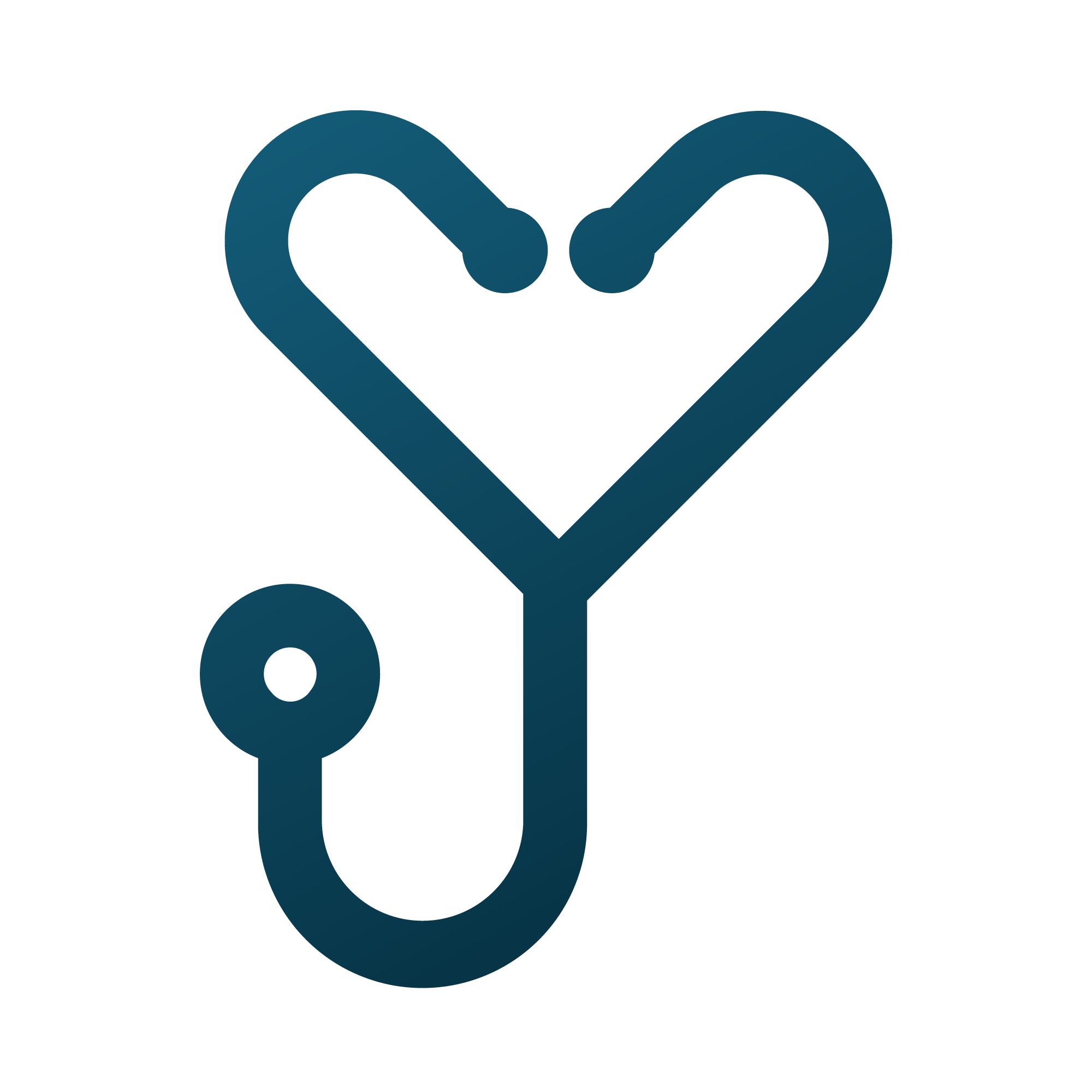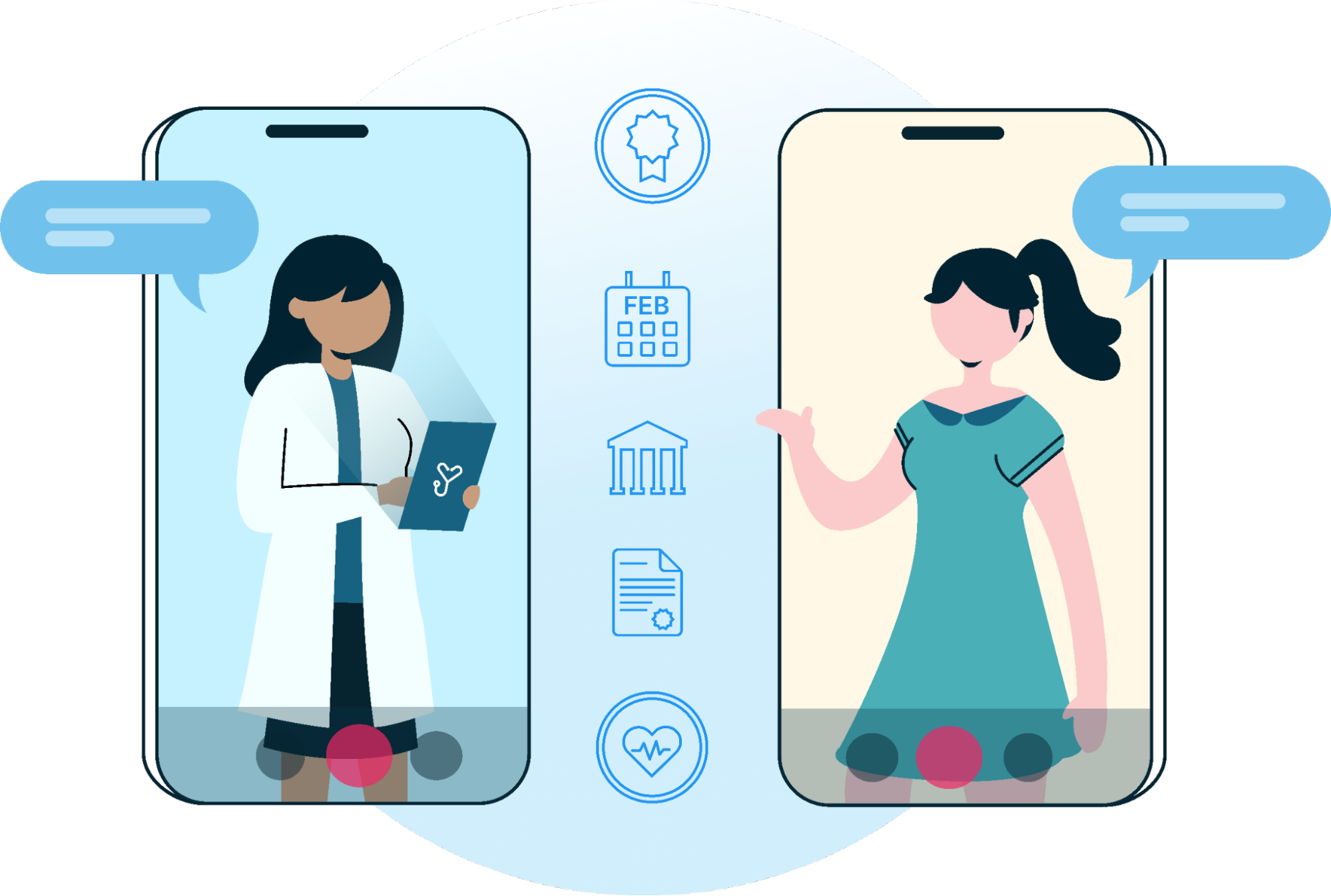Patient Engagement & Telehealth Trends To Look For In The Future

The widespread adoption of telemedicine has been the biggest story in the healthcare industry over the last few years. The question is no longer whether a practice will adopt the telehealth trends, but which platform they will choose. Managers of health systems should become familiar with the many features telemedicine platforms offer to make the right choice. And, more than ever, they must be aware of new trends in telehealth that will soon come to market.

What are the telehealth trends to look for this year? This article will review the most exciting developments in telemedicine today. Several innovations will come to market soon. To be included in this list, telehealth trends had to fulfill the following criteria:
- The trend must improve the quality of patient care
- It must improve patient engagement and access to care
- It should boost patient, provider, and staff satisfaction
- The trend must streamline workflows
- It should reduce waste and increase the revenue stream
Some of the telehealth trends presented in this article will become standards of care for virtual encounters as well as in-office visits. Managers of large health systems and smaller practices must stay abreast of these exciting changes to avoid being left behind. Here are the hottest telehealth trends, listed according to their place in a patient’s journey through a medical encounter.
The Patient’s Journey
It is helpful to consider all the steps that make up a medical encounter as a journey that starts as soon as a patient decides to schedule a medical appointment. This journey goes through three phases:
- before the encounter
- during the encounter
- after the encounter
Telehealth trends impact all three phases of the patient’s journey. New telehealth trends aim to ensure the voyage is safe, easy to access, productive and satisfying for all.
Before the Encounter
Staff and patients must complete several tasks before a medical encounter. In the past, patients had to complete some of these steps by telephone or in a doctor’s waiting room. The standard tools were archaic: a clipboard, a pen, and dozens of often repetitive paper forms. The process was tedious and tiresome not the best way to generate a good first impression. Vital information frequently went missing, and delays were commonplace. The best telehealth trends are platforms offer a refreshing solution.
Patient Self-Scheduling
Patients will soon schedule all their health visits online or with their smartphones. There are many advantages to this approach beyond convenience. Patients self-scheduling:
- Reduces no-shows and cancellations. When patients schedule their visits, they are more likely to show up for their appointment or reschedule if a conflict arises. Mend averages a 5% no-show rate for patient self-scheduled appointments. This is far below the national average rate of 23%. Lower no-show rates lead to:
- fewer missed chances for offering care
- better health outcomes
- better customer reviews
- higher satisfaction for both patients and staff
- Reduces or refocuses labor. Manual telephone scheduling and appointment reminders are inefficient and time-consuming processes. Automating scheduling allows staff to focus their skills on patient care and other revenue-generating activities.
- Improves patient satisfaction. Several large surveys have shown that users prefer self-scheduling over booking a visit by phone. These are the telehealth trends users are eager to recommend to family members and friends.
- Improves efficiency. By matching patients with the right provider and the right visit type at the right time, self-scheduling optimizes schedules for productivity and revenue.
- Transforms a health practice into a 24/7/365 e-commerce site. Patients no longer need to wait for the office to open to book an appointment. Self-scheduling allows health systems to accept appointments around the clock.
Identify At-Risk Patients
Some patients are more prone to miss appointments than others. Eliminating missed appointments is one way to improve access to care and health outcomes. Imagine if you could identify patients at higher risk of not keeping their appointments. How would you do that? By using artificial intelligence. AI-powered algorithms can predict the likelihood an individual will keep their appointment with up to 90% accuracy.
Mend’s patented AI-powered Attendance Predictor is one of the most exciting telehealth trends because it uses information obtained from a patient engagement platform to rank patients into risk categories. Identifying at-risk patients enables practices to engage patients and remove obstacles in accessing care.
Custom Appointment Reminders Based On AI
Another one of the exciting telehealth trends we now see is using customized text messages to remind patients of their appointments. Studies show that 90% of text messages are read within three minutes of receipt. Fully automated text messages can be customized based on an individual’s risk.
Mend’s telehealth platform uses its Attendance Predictor to automatically generate customized text messages. More frequent text messages, worded in clear language, encourage at-risk patients to confirm and keep their appointments.
Complete Forms Digitally
Clipboards and pens and endless paper forms in a provider’s waiting room will soon be relics of the past. Patients will be able to fill out intake information using a smartphone, tablet, or personal computer in the comfort of their homes. They will be able to send their medical histories, and photographs, and attach files if needed.
A popular telehealth trend we see is practices that use digital forms have an 86% completion rate. High form-completion rates translate to low no-show rates. A completed form serves as an appointment confirmation. It signals a high likelihood the patient will attend the visit. And with Mend, 68% of forms are filled out in less than one hour.
Using digital forms keeps patient information accurate and up to date with less work. This improves workflows and patient experience.
Self-Check-In
It is now commonplace to check in for a flight or a hotel online. Many businesses use the check-in step as an opportunity to carry out tasks such as verifying information and collecting payment. Self-check-in is another telehealth trend that will become routine for medical practices.
Self-check-in will allow patients to:
- Confirm the appointment and update information. Patients can verify demographic data and update credit card information for automatic bill payment. Mend also uses this step as an opportunity to identify individuals who might struggle to connect via telehealth. An AI-powered algorithm will identify those at risk, report who is likely to struggle, and engage them proactively. Instant technical support is available for patients, providers and staff within fifteen seconds.
- Pay co-pays. 85% of patients say they prefer paying medical bills electronically. Mend will soon make the collection of co-pays, self-pays, and other payment amounts automatic as part of the check-in process.
- Collect vital signs using a web camera. The Mend Tricorder uses artificial intelligence to obtain a patient’s heart rate, respiratory rate, and blood pressure as well as other health parameters using a simple webcam.
Virtual Waiting Room
Important telehealth trends nudge patients to take a more active role in their health and wellbeing. Wait times are opportunities to engage patients and provide education on health and lifestyle issues.
Mend has created a virtual waiting room experience that uses a Netflix style portal to access a wide choice of videos. Health systems can upload custom videos to highlight their providers and the services they offer. Data shows that Mend’s virtual waiting room boosts patient satisfaction by a whopping 23 percent.
During the Encounter
The tasks completed before the visit ensure everything is in place for a more productive medical encounter. The telehealth trends for aiding medical encounters are among the most exciting in the industry. Here are a few tools that will soon be available.
Real-Time Translation With Captioning
Health systems are responsible for providing care in the preferred language of their patients. Often, this requires the use of interpreters and translators. Translation services are often costly and can cause delays in care due when they are not readily available.
Two new telehealth trends solve these problems. One is real-time captioning. Providers and patients can communicate freely during telehealth encounters, despite language differences, with captioning on the bottom of their screens. The other option is having an interpreter join the encounter remotely.
AI Translation For Sign Language
One unique challenge is that of providing telehealth services to patients who are hearing impaired in a way that is sensitive to their needs. Mend’s platform offers AI-assisted American Sign Language translations with real-time captioning for both in-person and virtual visits.
Automatic Charting And Note Transcribing
Surveys on health care provider burnout show that providers want to spend more time with patients and less time on administrative tasks. One telehealth innovation aims to help providers do just that. In the near future, AI plug-ins on telemedicine platforms will transcribe encounter notes and chart them automatically, freeing providers to focus on patient care.
Secure and fully encrypted HIPAA compliant systems will capture and record patient encounters. AI will identify each participant, map out the conversation, and extract key data. The software will chart encounter notes and suggest billing codes at the appropriate complexity level in real time. AI-assisted charting and note-taking will allow physicians to just be doctors again.
After the Encounter
When the face-to-face part of a health encounter ends, several more tasks are at hand. This is true regardless of whether the visit was virtual or in-office. Staff must process bills and collect payments from third parties and patients. Practices need to keep patients engaged to monitor response to treatment and ensure follow-up. This is also the time to request reviews and evaluations. Several telehealth trends will help health systems provide care after the formal part of a visit ends.
Payments will be collected automatically
Collecting payment for services rendered is a tedious process. 75% of practices still rely on paper billing and manual processes for collection. Delays in payment and unsettled bills have a negative effect on a practice’s cash flow. One telehealth trend provides a solution to this problem.
Mend creates an interface between billing and Practice Management Systems. Once a third-party adjudicates a claim and determines the patient’s balance of the bill, Mend can automatically charge a credit card kept on file. Alternatively, the software will dispatch digital forms to collect payment automatically.
Patients prefer the convenience of automatic payments and not having to receive bulky paper statements. Practices enjoy faster revenue cycles with less manual labor.
Reviews
Like it or not, the use of online reviews is a growing trend that reflects the rise of consumerism in the healthcare industry. More than ever, medical practices must ensure they maintain a healthy online presence. According to a recent survey, 90% of patients reported using online reviews to evaluate providers. Almost three in four said they used reviews as the first step in choosing a new provider. The power of reviews is such that nearly half of patients would book an appointment with an out-of-network provider who has favorable reviews.
The good news is that only 1% of patients leave a very negative review, and just 10% leave somewhat negative reviews. So, a good strategy to polish a practice’s online profile is to encourage the vast majority of satisfied patients to leave great reviews.
Users of a service are most likely to leave a review immediately after an encounter. Therefore, the most effective way to generate more reviews is to nudge patients into doing so right away. Post-visit surveys, reviews, and other feedback can be requested with user-friendly tools as soon as a health visit ends. And patients will be more likely to write excellent reviews when they are dazzled by the ease and convenience of a well-run telemedicine visit.
Follow-Up Appointment
Follow-up appointments are essential to the continuity of care. They are also crucial to the continued growth of a practice. As with any business model, it is easier and less costly to retain current clients than to attract new ones. Ensuring that patients return for follow-up is a telehealth trend that leads to better health outcomes and well-booked provider schedules.
Just as with booking the original appointment, letting patients self-schedule follow-up visits lowers the likelihood of missed follow-up appointments. And patients enjoy the freedom and ease of altering visit times should their schedule change.
When after-encounter tasks are completed, the patient’s journey comes to an end. But a new journey begins. Using the latest telemedicine tools, practices can keep their patient engaged. Patients and providers prepare for the next encounter. A new cycle begins, ensuring continuity of care. Should an unexpected arise, patients have the option to schedule a telehealth visit quickly and with ease. With telehealth, patients are allowed to take an active role in their care.
Conclusion
The hottest telehealth trends are not gimmicks. They are solutions to real problems healthcare systems and patients face every day. The best telehealth trends address the issue of access to care. They remove barriers to care by making appointments timely and easy to access. They improve communication with translation tools and AI-powered captioning for American Sign Language.
Some telehealth trends also remove many of the administrative hassles that providers and staff encounter. Scheduling and billing are done automatically. Patients fill out forms prior to visits. Webcams obtain and record vital signs prior to linking up with a provider. AI-powered software will generate visit notes and transcribe them automatically. The platform will suggest precise billing codes.
Perhaps, the most significant telehealth trend is to keep patients engaged not only during an encounter, but also before and after the visit. Self-scheduling of appointments, virtual waiting rooms with educational videos, and giving patients the opportunity to leave feedback keeps patients connected to a practice. And keeping patients engaged leads to better health outcomes and more satisfied customers.
Mend has a proven track record of offering cutting-edge telehealth solutions. We help organizations of all sizes run more efficiently. To see how Mend can help keep your patients engaged and improve your company’s bottom line, click here.
FAQs
What is a patient engagement strategy?
Providers of healthcare services are facing a new challenge – that of revamping customer experience. The goal of a patient engagement strategy is to make it easier for patients to access care in a highly satisfying way. The strategies used include improving communication and employing technology that is easy to use.
A patient engagement strategy is one of the more popular telehealth trends that represents a commitment to meet or exceed customer expectations.
How does telehealth improve patient engagement?
Telehealth empowers patients to gain more control over many aspects of their care. Telehealth trends such as self-scheduling, timeliness of care, and ease in connecting with providers gives patients the care they need, when they need it, from the comfort of their own homes.
The ease of scheduling appointments with the option of a telemedicine session reduces the risk of health issues going unattended. As patients navigate the telemedicine process, they become more active and better-informed consumers of health care.
What is the trend of telehealth?
The overall trend in telehealth is to adopt state-of-the-art technologies to improve patient experience. Like many other industries, medical practices are employing the power of telehealth to create a 24/7/365 online commerce experience. Greater access to care results in better outcomes. And patients are empowered to take a more active role in healthcare decisions.
Keyword:
Find a Topic:
Recent Posts
- Compassionate Foundations: Self-Care for Mental Health Providers
- Behavioral Health News: Mend Partners with Leading Community Mental Health Organizations to Reduce No-Shows and Increase Access to Care
- Understanding SAMHSA’s Key Changes to 42 CFR Part 8: A Guide for Healthcare Professionals
- Becoming a CCBHC: Staffing Requirements
- Empowering Change: SAMHSA’s Impact on Behavioral Health Through Grant Funding, Innovation, and Collaboration

